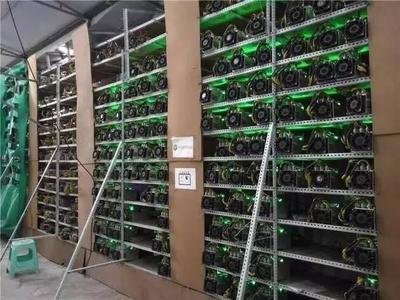Understanding the Long-Term Implications of Electricity Costs in Mining
The relentless hum of mining rigs, a symphony of silicon and electricity, has become the defining soundtrack of the cryptocurrency revolution. But beneath the surface of this digital gold rush lies a critical, often overlooked factor: electricity costs. While the allure of Bitcoin, Ethereum, and Dogecoin has drawn countless individuals and corporations into the mining arena, the long-term profitability and sustainability of these ventures are inextricably linked to the fluctuating price of power.

Consider Bitcoin (BTC), the undisputed king of cryptocurrencies. Its proof-of-work consensus mechanism demands increasingly complex computations, translating directly into higher energy consumption. As the network grows and the difficulty adjusts, miners are compelled to invest in more powerful, energy-intensive mining rigs to remain competitive. This arms race drives up electricity demand, putting a strain on local grids and potentially impacting regional energy prices.
Ethereum (ETH), in its transition from proof-of-work to proof-of-stake, aimed to alleviate these energy concerns. However, the legacy of ETH mining and the continued existence of Ethereum Classic (ETC), which maintains a proof-of-work system, serve as a reminder of the significant energy footprint associated with securing decentralized networks.
Dogecoin (DOGE), initially conceived as a lighthearted meme coin, has also found its place in the mining ecosystem. While its mining algorithm is less energy-intensive than Bitcoin’s, the sheer volume of Dogecoin transactions and the ongoing mining activity still contribute to overall electricity consumption within the cryptocurrency landscape. The value proposition needs to be robust to sustain the energy expenditure.
The impact of electricity costs extends beyond the individual miner. Large-scale mining farms, often located in regions with cheap electricity like Iceland or certain parts of China and North America, can exert considerable influence on local energy markets. Fluctuations in electricity prices can significantly impact their profitability, forcing them to relocate or even shut down operations. These shifts can, in turn, affect the overall hashrate of the network and the security of the blockchain.
Mining machine hosting services offer a potential solution by providing miners with access to infrastructure and electricity at competitive rates. These hosting facilities often leverage economies of scale to negotiate favorable electricity contracts and optimize energy consumption through efficient cooling systems and power management strategies. However, even with these advantages, miners must carefully analyze the electricity costs offered by hosting providers to ensure long-term profitability.
The type of mining rig employed also plays a crucial role in determining electricity consumption. Application-Specific Integrated Circuits (ASICs), designed specifically for mining particular cryptocurrencies, generally offer higher hash rates per watt compared to general-purpose hardware like GPUs. However, ASICs are often expensive and quickly become obsolete as new generations of hardware emerge, forcing miners to constantly upgrade their equipment to maintain competitiveness. This cycle of hardware upgrades further contributes to the overall energy demand of the mining industry.
Furthermore, the regulatory landscape surrounding cryptocurrency mining is evolving rapidly. Governments around the world are grappling with the environmental impact of energy-intensive mining operations, and some are considering measures to restrict or regulate mining activity. These regulations could range from taxes on electricity consumption to outright bans on mining in certain regions. Such policy changes could have profound implications for the profitability and long-term viability of cryptocurrency mining ventures.
In the long run, the cryptocurrency industry must prioritize energy efficiency and explore alternative consensus mechanisms to mitigate the environmental impact of mining. Innovations like proof-of-stake and delegated proof-of-stake offer promising alternatives to proof-of-work, significantly reducing energy consumption without compromising network security. Moreover, miners can explore renewable energy sources like solar, wind, and hydro power to reduce their carbon footprint and promote sustainable mining practices.

Ultimately, understanding the long-term implications of electricity costs is essential for anyone involved in cryptocurrency mining. By carefully considering energy efficiency, exploring alternative consensus mechanisms, and embracing renewable energy sources, the industry can strive towards a more sustainable and environmentally responsible future. The survival and growth of the decentralized digital economy depend on it.
This article explores the intricate relationship between fluctuating electricity prices and mining profitability, highlighting technological innovations, regulatory impacts, and sustainability challenges. It offers a nuanced perspective on how energy efficiency and geopolitical shifts could reshape the industry’s economic landscape over decades.